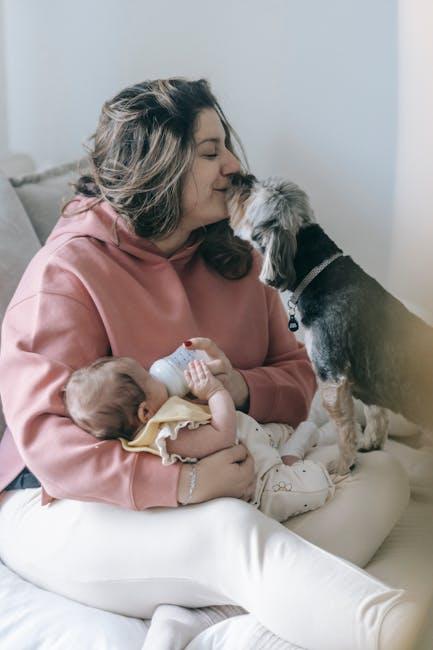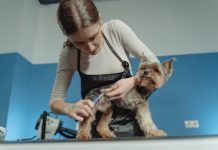Welcoming a new puppy into your home is an exciting and joyful experience, filled with wagging tails, tiny paws, and boundless energy. However, along with the delight comes the responsibility of ensuring your furry friend grows up healthy, happy, and well-adjusted. Whether you’re a first-time puppy parent or a seasoned pet owner, understanding the essentials of puppy care is crucial to providing the best start in life for your little companion. In this guide, we’ll walk you through the fundamental aspects of puppy care, from nutrition and health to training and socialization, helping you create a loving and nurturing environment for your new four-legged family member. Let’s embark on this rewarding journey together, ensuring your puppy’s tail keeps wagging with joy every step of the way.
Creating a Safe and Comfortable Space for Your New Puppy
Bringing a new puppy home is a delightful experience, but it also requires thoughtful preparation to ensure your furry friend feels secure and loved. Start by designating a specific area in your home where your puppy can relax and explore. This space should be away from high-traffic areas to minimize stress and should be puppy-proofed to prevent accidents. Consider using baby gates to create a cozy nook where they can retreat and rest.
Essentials for Your Puppy’s Space:
- Comfortable Bedding: Choose a soft, washable bed that’s just the right size for your puppy. This will become their sanctuary for naps and downtime.
- Safe Toys: Provide a selection of chew toys to keep them entertained and to help with teething.
- Water and Food Bowls: Use non-slip bowls to prevent spills and ensure they have constant access to fresh water.
- Training Pads: Place these in a corner to aid in house-training and minimize messes.
Make sure the temperature in this area is comfortable and free from drafts. Puppies, much like infants, are sensitive to temperature changes. Regularly check the space for any potential hazards, like electrical cords or small objects, that your curious puppy might chew on. Creating a welcoming environment will help your new companion adjust quickly, fostering a bond built on trust and security.

Nutrition and Feeding Tips for a Healthy Start
Ensuring your puppy receives the right nutrition is crucial for their growth and development. A balanced diet helps in building strong bones, a healthy immune system, and a shiny coat. Choose a high-quality puppy food that lists meat as the first ingredient and is specially formulated to meet the nutritional requirements of growing dogs. Remember, puppies need more calories and nutrients than adult dogs due to their rapid growth.
- Portion Control: Follow the feeding guidelines on the puppy food package, adjusting based on your puppy’s activity level and growth rate. It’s essential to avoid overfeeding, as obesity can lead to health issues later in life.
- Meal Frequency: Puppies generally require three to four meals a day. As they grow, you can gradually reduce the number of meals to two per day.
- Fresh Water Access: Ensure your puppy has access to clean, fresh water at all times to stay hydrated.
Introducing new foods should be done gradually to avoid digestive upsets. Mix a small amount of the new food with their current food, increasing the proportion over a week. Avoid feeding your puppy human food, especially items like chocolate, grapes, and onions, which can be toxic. If in doubt, consult with your veterinarian to tailor a feeding plan that best suits your puppy’s needs.

Building a Routine: Exercise and Training Essentials
Creating a consistent routine is essential for the healthy development of your puppy. Regular exercise not only helps in managing their energy levels but also contributes to their overall well-being. Here are some essentials to consider when planning your puppy’s exercise and training routine:
- Daily Walks: Ensure your puppy gets at least two short walks a day. This helps in socializing them with different environments and people.
- Playtime: Incorporate interactive play sessions using toys like balls or frisbees to keep them mentally stimulated.
- Training Sessions: Use short, consistent training sessions to teach basic commands such as “sit,” “stay,” and “come.” This not only helps in discipline but also strengthens your bond.
Remember, puppies have different energy levels and exercise needs depending on their breed and age. Observe your puppy and adjust the routine as needed to ensure they are getting the right amount of activity without being overexerted. The goal is to create a balanced routine that fosters both physical and mental growth, paving the way for a happy, healthy dog.
















